Radiologic Technologist (X-ray tech)| Stellar College
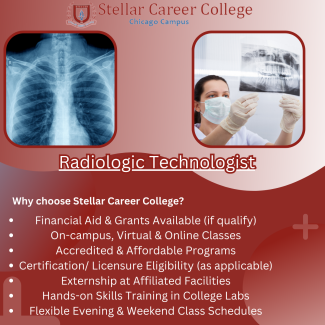
Discover the crucial role played by radiologic technologists in the medical field. This article provides an in-depth overview of their responsibilities, skills required, and career prospects. Read on to learn more.
Radiologic technologists are essential members of the healthcare team who play a critical role in diagnosing and treating patients. They are highly skilled professionals trained to operate medical imaging equipment, such as X-ray machines, CT scanners, and MRI machines. Their expertise in capturing and analyzing images helps physicians accurately diagnose and monitor various medical conditions. In this article, we will delve into the world of radiologic technologists, exploring their role, skills, and the opportunities available in this rewarding career.
- What is a Radiologic Technologist?
- Educational Requirements for Radiologic Technologists
- Specializations in Radiologic Technology
- Duties and Responsibilities of Radiologic Technologists
- Skills Required to Excel as a Radiologic Technologist
- Job Outlook and Career Prospects
- Challenges Faced by Radiologic Technologists
- Continuing Education and Professional Development
- Salary and Benefits for Radiologic Technologists
- Future Trends in Radiologic Technology
| Topics |
|---|
| What is a Radiologic Technologist? |
| Educational Requirements for Radiologic Technologists |
| Specializations in Radiologic Technology |
| Duties and Responsibilities of Radiologic Technologists |
| Skills Required to Excel as a Radiologic Technologist |
| Job Outlook and Career Prospects |
| Challenges Faced by Radiologic Technologists |
| Continuing Education and Professional Development |
| Salary and Benefits for Radiologic Technologists |
| Future Trends in Radiologic Technology |
What is a Radiologic Technologist?
Radiologic technologists, also known as radiographers, are healthcare professionals trained to perform diagnostic imaging examinations on patients. They work closely with physicians and other medical personnel to capture clear and accurate images that aid in the diagnosis and treatment of various medical conditions. Radiologic technologists operate a range of medical imaging equipment, including X-ray machines, CT scanners, MRI machines, and mammography machines.
Radiologic technologists must possess a thorough understanding of human anatomy, medical imaging techniques, and patient positioning. They follow specific protocols to ensure patient safety and obtain high-quality images. Additionally, they play a vital role in patient care, providing reassurance, explaining procedures, and maintaining a comfortable environment during imaging procedures.
Radiologic technologists work in various healthcare settings, such as hospitals, diagnostic imaging centers, clinics, and physician offices. They collaborate closely with radiologists, who interpret the images they capture, to provide accurate and timely diagnostic information to healthcare providers.
Educational Requirements for Radiologic Technologists
Becoming a radiologic technologist typically requires completing an accredited educational program in radiography. These programs are available at colleges, universities, and specialized schools. The program duration can range from one to four years, depending on the level of education pursued. Most programs culminate in an associate’s degree, while some offer bachelor’s degrees in radiologic technology.
The curriculum of radiologic technology programs includes a combination of classroom instruction and hands-on clinical training. Students learn about anatomy, patient care, medical imaging techniques, radiation safety, and image evaluation. Clinical rotations provide students with practical experience in performing various imaging procedures under the supervision of experienced technologists.
Upon completing their education, graduates are eligible to take the national certification examination administered by the American Registry of Radiologic Technologists (ARRT). Certification is not mandatory in all states, but many employers prefer to hire certified technologists. It demonstrates a higher level of competency and ensures that radiologic technologists adhere to professional standards and ethics.

Specializations in Radiologic Technology
Radiologic technology offers various specializations that allow technologists to focus on specific areas of medical imaging. Some common specializations include:
- Computed Tomography (CT): Technologists specializing in CT scans work with specialized equipment to capture detailed cross-sectional images of the body. CT scans are useful for diagnosing a wide range of conditions, including injuries, tumors, and cardiovascular diseases.
- Magnetic Resonance Imaging (MRI): MRI technologists operate MRI machines, which use strong magnetic fields and radio waves to produce detailed images of organs and tissues. MRI scans are particularly effective for evaluating soft tissues, such as the brain, muscles, and joints.
- Mammography: Mammography technologists focus on performing breast imaging exams. They use low-dose X-ray equipment to screen for and diagnose breast cancer and other breast abnormalities. Mammography plays a crucial role in early detection and treatment of breast cancer.
- Interventional Radiography: Technologists in interventional radiography assist radiologists during minimally invasive procedures. They use imaging guidance to perform procedures such as angioplasty, embolization, and biopsies. Interventional radiography helps avoid the need for open surgery in many cases.
These are just a few examples of the specialized areas within radiologic technology. Technologists can choose to pursue additional training and certifications to enhance their skills and expand their career opportunities.
Duties and Responsibilities of Radiologic Technologists
Radiologic technologists have a diverse range of responsibilities that revolve around capturing high-quality diagnostic images. Some of their key duties include:
- Preparing patients: Technologists explain procedures to patients, address any concerns, and ensure their comfort and safety. They may also administer contrast agents for certain imaging exams.
- Positioning patients: Technologists position patients correctly to obtain the desired images. This may involve adjusting the patient’s body, using immobilization devices, or providing support for optimal image quality.
- Operating imaging equipment: Technologists operate and calibrate imaging equipment to capture images accurately. They follow established protocols and safety measures to minimize radiation exposure to patients and themselves.
- Collaborating with healthcare professionals: Technologists work closely with radiologists and other healthcare providers to ensure the proper selection of imaging techniques and to provide accurate information for diagnosis and treatment.
- Maintaining records and equipment: Technologists maintain detailed patient records, including the images captured and any relevant information. They also perform routine maintenance on imaging equipment to ensure its proper functioning.
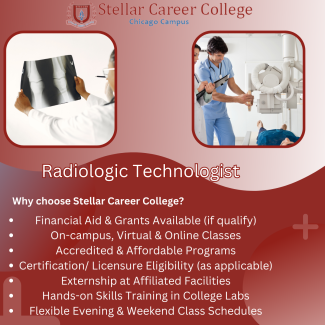
Skills Required to Excel as a Radiologic Technologist
To excel as a radiologic technologist, individuals need a combination of technical skills, critical thinking abilities, and interpersonal skills. Some essential skills for this profession include:
- Technical proficiency: Radiologic technologists must have a thorough understanding of imaging equipment and techniques. They should be able to operate and troubleshoot different types of machinery effectively.
- Attention to detail: Capturing clear and accurate images requires meticulous attention to detail. Technologists must carefully follow protocols and positioning instructions to ensure the best possible diagnostic quality.
- Communication skills: Radiologic technologists interact with patients of diverse backgrounds and ages. Effective communication is crucial in providing clear instructions, answering questions, and alleviating patient anxiety during imaging procedures.
- Critical thinking: Technologists often encounter unexpected challenges or anatomical variations that require quick thinking and problem-solving skills. The ability to adapt to different situations and make appropriate decisions is essential.
- Empathy and compassion: Radiologic technologists work with patients whomay be experiencing pain, anxiety, or discomfort. Demonstrating empathy and compassion helps create a supportive and comforting environment for patients undergoing imaging procedures.
- Radiation safety knowledge: As professionals working with radiation, radiologic technologists must have a deep understanding of radiation safety principles. They follow strict protocols to minimize radiation exposure to patients, themselves, and others in the vicinity.
- Teamwork and collaboration: Radiologic technologists work as part of a multidisciplinary healthcare team. They collaborate closely with radiologists, nurses, and other medical professionals to ensure seamless patient care and accurate image interpretation.
Job Outlook and Career Prospects
The demand for radiologic technologists is expected to grow significantly in the coming years. Factors such as an aging population, advances in medical imaging technology, and the need for early disease detection contribute to this growth. According to the U.S. Bureau of Labor Statistics, the employment of radiologic technologists is projected to increase by 9% from 2020 to 2030, which is faster than the average for all occupations.
Radiologic technologists can find employment opportunities in hospitals, diagnostic imaging centers, outpatient clinics, physician offices, and research institutions. Additionally, they may pursue career paths in education, management, or specialized areas like cardiovascular or pediatric imaging. Continuous advancements in medical imaging technology offer promising prospects for those entering the field.
Challenges Faced by Radiologic Technologists
While the field of radiologic technology offers exciting opportunities, it also presents its own set of challenges. Some common challenges faced by radiologic technologists include:
- Radiation exposure: Technologists work with radiation-emitting equipment regularly, increasing their risk of radiation exposure. Strict adherence to safety protocols and the use of protective measures help mitigate this risk.
- Physical demands: The job of a radiologic technologist often involves prolonged periods of standing, bending, and lifting patients. This physical aspect of the work can lead to fatigue and musculoskeletal strain.
- High-stress environment: Technologists work in fast-paced healthcare settings, dealing with patients who may be in pain or distressed. Managing patient anxiety, meeting time constraints, and handling emergency situations can contribute to high-stress levels.
- Technological advancements: While advances in imaging technology provide valuable diagnostic capabilities, they also require radiologic technologists to continually update their knowledge and skills. Staying abreast of new equipment and procedures is crucial to delivering optimal patient care.
Despite these challenges, the field of radiologic technology offers a fulfilling career for individuals passionate about healthcare and diagnostic imaging.
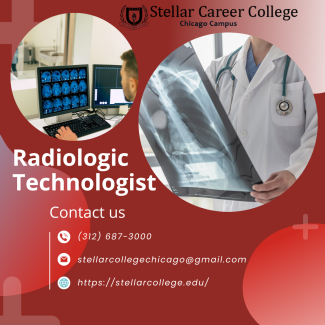
Continuing Education and Professional Development
Continuing education and professional development are integral to maintaining competency and staying current in the rapidly evolving field of radiologic technology. Radiologic technologists can pursue various opportunities to expand their knowledge and skills, including:
- Continuing education courses: Technologists can participate in workshops, conferences, and online courses to enhance their understanding of new imaging techniques, radiation safety practices, and patient care strategies.
- Advanced certifications: Additional certifications in specialized areas such as CT, MRI, or mammography can broaden career options and increase marketability.
- Higher education: Technologists may choose to pursue bachelor’s or master’s degrees in radiologic sciences or related fields. These advanced degrees can lead to leadership roles, teaching positions, or research opportunities.
- Professional organizations: Joining professional organizations, such as the American Society of Radiologic Technologists (ASRT), provides access to resources, networking opportunities, and industry updates.
Continuing education not only enhances professional growth but also contributes to improved patient care and better outcomes.
Salary and Benefits for Radiologic Technologists
Radiologic technologists enjoy
competitive salaries and a range of benefits. The exact salary can vary based on factors such as experience, specialization, geographic location, and the employing healthcare facility. According to the U.S. Bureau of Labor Statistics, the median annual wage for radiologic technologists was $63,710 as of May 2020.
In addition to a salary, radiologic technologists often receive benefits such as health insurance, retirement plans, paid time off, and professional development opportunities. Many healthcare facilities also offer shift differentials for technologists who work evenings, weekends, or holidays.
The field of radiologic technology provides a stable and rewarding career path with competitive compensation and the potential for advancement.
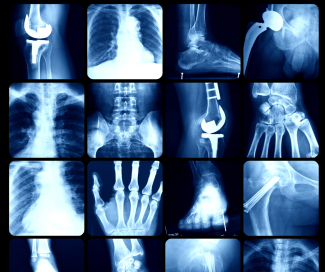
Future Trends in Radiologic Technology
Advancements in technology continue to shape the field of radiologic technology. Several trends are expected to impact the profession in the coming years:
- Artificial Intelligence (AI) in imaging: AI has the potential to revolutionize medical imaging by aiding in image interpretation, automating routine tasks, and improving diagnostic accuracy. Radiologic technologists will need to adapt to working alongside AI systems and utilize them effectively.
- 3D and 4D imaging: Three-dimensional and four-dimensional imaging techniques provide enhanced visualization and improved diagnostic capabilities. Radiologic technologists will need to acquire the skills to operate and interpret these advanced imaging modalities.
- Mobile imaging: Mobile imaging units equipped with imaging technology are becoming increasingly popular, allowing healthcare providers to reach underserved areas and provide on-site imaging services. Technologists may find opportunities in mobile imaging units or telemedicine settings.
- Radiation dose reduction: Efforts to minimize radiation exposure to patients and technologists will continue to be a priority. Technologists will need to stay updated on the latest techniques and protocols for radiation dose optimization.
- Specialized imaging modalities: As medical advancements progress, new imaging modalities may emerge. Radiologic technologists may need to acquire specialized skills to operate these emerging technologies effectively.
The future of radiologic technology holds exciting possibilities, and staying informed and adaptable will be essential for technologists to thrive in this dynamic field.
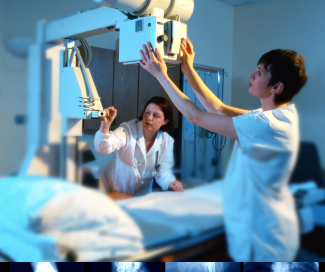
FAQs (Frequently Asked Questions)
1. What is the difference between a radiologic technologist and a radiologist?
Radiologic technologists are responsible for operating imaging equipment and capturing images, while radiologists are medical doctors who specialize in interpreting those images and providing diagnostic reports. Technologists work under the supervision of radiologists and play a crucial role in obtaining high-quality images for accurate diagnosis.
2. Is certification necessary to work as a radiologic technologist?
Certification is not mandatory in all states, but many employers prefer to hire certified radiologic technologists. Certification is typically obtained by passing a national examination conducted by the American Registry of Radiologic Technologists (ARRT).
3. Can radiologic technologists specialize in more than one area?
Yes, radiologic technologists can pursue additional certifications and specialize in multiple areas of radiologic technology. This allows them to expand their skill set and career opportunities.
4. Are there opportunities for career advancement in radiologic technology?
Yes, radiologic technologists can advance their careers through various avenues. They can pursue advanced certifications, take on leadership roles, move into education or research, or specialize in specific areas of imaging, such as cardiovascular or pediatric radiography.
5. What are the working hours like for radiologic technologists?
Radiologic technologists may work full-time or part-time hours, depending on the healthcare facility’s needs. They may also work evenings, weekends, or be on-call for emergency situations.
6. Is radiation exposure a concern for radiologic technologists?
Radiologic technologists follow strict protocols and safety measures to minimize radiation exposure to themselves, patients, and other healthcare personnel. They use lead aprons, collimators, and other protective devices to shield themselves and patients from unnecessary radiation.
7. Can radiologic technologists specialize in pediatric imaging?
Yes, some radiologic technologists specialize in pediatric imaging. They receive additional training to work with children of different ages and ensure their comfort during imaging procedures. Pediatric imaging requires specialized techniques and knowledge to obtain accurate images while minimizing radiation exposure.
8. Are there opportunities for radiologic technologists to work in research?
Yes, radiologic technologists can pursue research opportunities in collaboration with radiologists, physicists, and other healthcare professionals. They may contribute to studies focused on improving imaging techniques, radiation safety, or the development of new imaging technologies.
9. What are the qualities of a successful radiologic technologist?
Successful radiologic technologists possess technical proficiency, attention to detail, strong communication skills, critical thinking abilities, empathy, and compassion. They are adaptable, able to work well under pressure, and committed to providing high-quality patient care.
10. How can I support the field of radiologic technology?
You can support the field of radiologic technology by advocating for patient access to high-quality imaging services, staying informed about advancements in medical imaging technology, and promoting the importance of radiation safety. Additionally, supporting educational programs and professional organizations dedicated to the field can contribute to its growth and development.
Conclusion
Radiologic technology plays a crucial role in modern healthcare, enabling accurate diagnoses and effective treatment planning. Radiologic technologists are highly skilled professionals who operate imaging equipment, capture diagnostic images, and collaborate with healthcare teams to provide quality patient care.
With the demand for medical imaging on the rise, the field of radiologic technology offers promising career prospects. Specializations, such as CT, MRI, mammography, and interventional radiography, provide opportunities for technologists to focus on specific areas of expertise.
While the profession comes with its challenges, including radiation exposure and a fast-paced work environment, radiologic technologists continue to embrace advancements in technology, such as AI integration and mobile imaging. Continuing education and professional development are vital for technologists to stay abreast of evolving practices and provide the highest standard of care.
As the field of radiologic technology continues to advance, it is essential to recognize and appreciate the contributions of radiologic technologists. Their dedication to patient care, technical expertise, and commitment to radiation safety make them integral members of the healthcare team.
